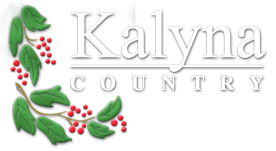What is Kalyna?
Everything you need to know about the Kalyna
 Kalyna is the Ukrainian name for the Highbush Cranberry, a plant that grows naturally in parks and wilderness areas across the region. The kalyna berries make falvourful jelly, sauces, juice & syrup and were a popular source of food for early pioneers, Natives and wildlife.
Kalyna is the Ukrainian name for the Highbush Cranberry, a plant that grows naturally in parks and wilderness areas across the region. The kalyna berries make falvourful jelly, sauces, juice & syrup and were a popular source of food for early pioneers, Natives and wildlife.
“A rose is a rose by any name” — except if it’s a Guelder Rose, in which case it’s a Kalyna! That’s because Kalyna is the Ukrainian name for the Highbush Cranberry, more poetically known in English as the “Guelder” Rose, though sometimes called the “Snowball Tree” because of its’ pom-poms of white flowers. For the Cree Indian inhabitants of Kalyna Country the same plant is called “Nepiminana”, while in French its’ nom-de-plume is “Sureau aquatique”, and the even more melliflous-sounding, “Boule-de-Neige”. Germans call kalyna “Der Wasserahorn” (literally, the water maple), since its foliage looks like a three-point version of the famous leaf that graces the Canadian flag. To botanists, the kalyna is “Viburnum opulus”, a tree-like shrub which grows 1-4 meters in height and is a member of the honeysuckle family.
However, for East Europeans of various nationalities — Romanians, Poles, Slovaks, and Russians — the highbush cranberry is the beloved calina or kalina, an Old World friend that immigrants were delighted to find growing in the wilds of the Canadian West. Do you remember the rousing Red Army Chorus rendition of the song “Kalinka”, which is often played by organists at hockey games to stir the home team? Guess what kalinka means — a little kalyna bush!
But there are four things about the kalyna that every visitor should know about the cranberry that gave Kalyna Country its name.
1) Kalyna is not used to make the cranberry cocktail that you buy in your local supermarket. That’s made with the lowbush or bogbush cranberry, which isn’t even part of the same family of plants as the kalyna.
2) You can make all kinds of wonderful things to eat with kalyna berries, and a host of home remedies with other parts of the plant. Jelly, jam, syrup, and juice are among the tasty treats that can be prepared with the . The fruit of the kalyna can also be used to flavour a wide variety of foods and drink, including pemmican, baking, BBQ sauce, salad dressing, and vodka. Among the traditional medicines that can be made with the kalyna are painkillers, diuretics, and a treatment for septic shock,
3) For Ukrainians, the kalyna has special significance, having for centuries served as a symbol of popular resistance to political oppression and foreign domination. Traditionally planted on the graves of fallen Cossacks, the kalyna is now prominently represented on the official emblem of independent Ukraine’s Armed Forces. Besides being the subject of many stirring, patriotic hymns, the kalyna is also celebrated in scores of Ukrainian folk songs about romantic love and about longing for the homeland.
4) A whole range of wildlife loves to feast on highbush cranberries in the fall, including moose, elk, and rabbits, to name but a few of the furrier residents of Kalyna Country. And in the winter, the dried fruit is an important source of nourishment for the Bohemian Waxwings and Grosbeaks, whose cheering presence is an inspiration to all.
In short, the kalyna is a plant for everyone in all seasons, and a most fitting emblem for an ecomuseum.
